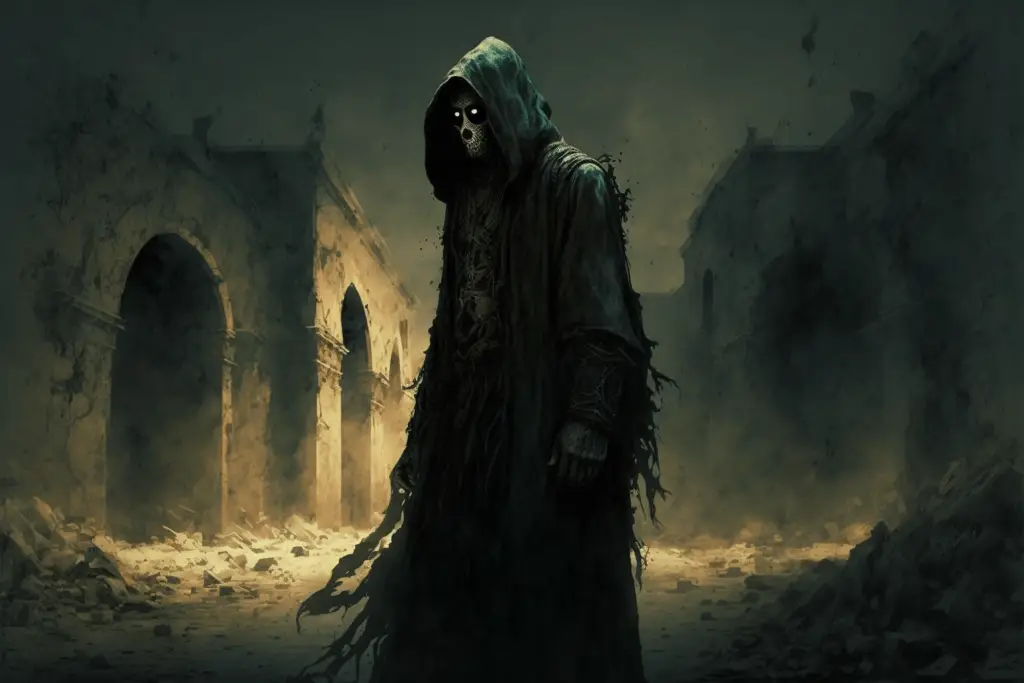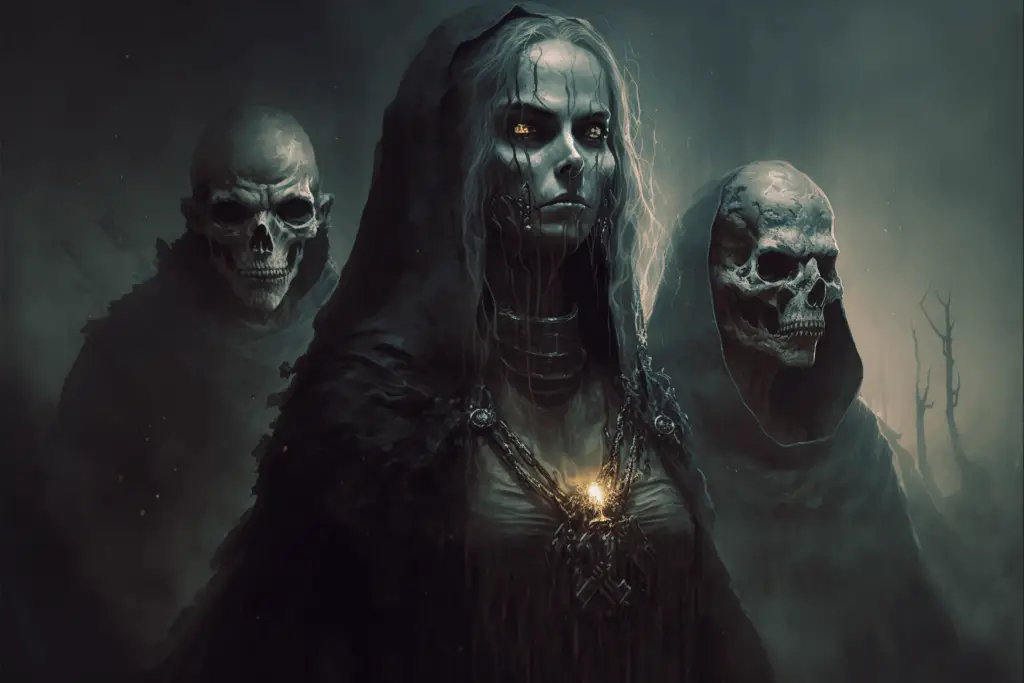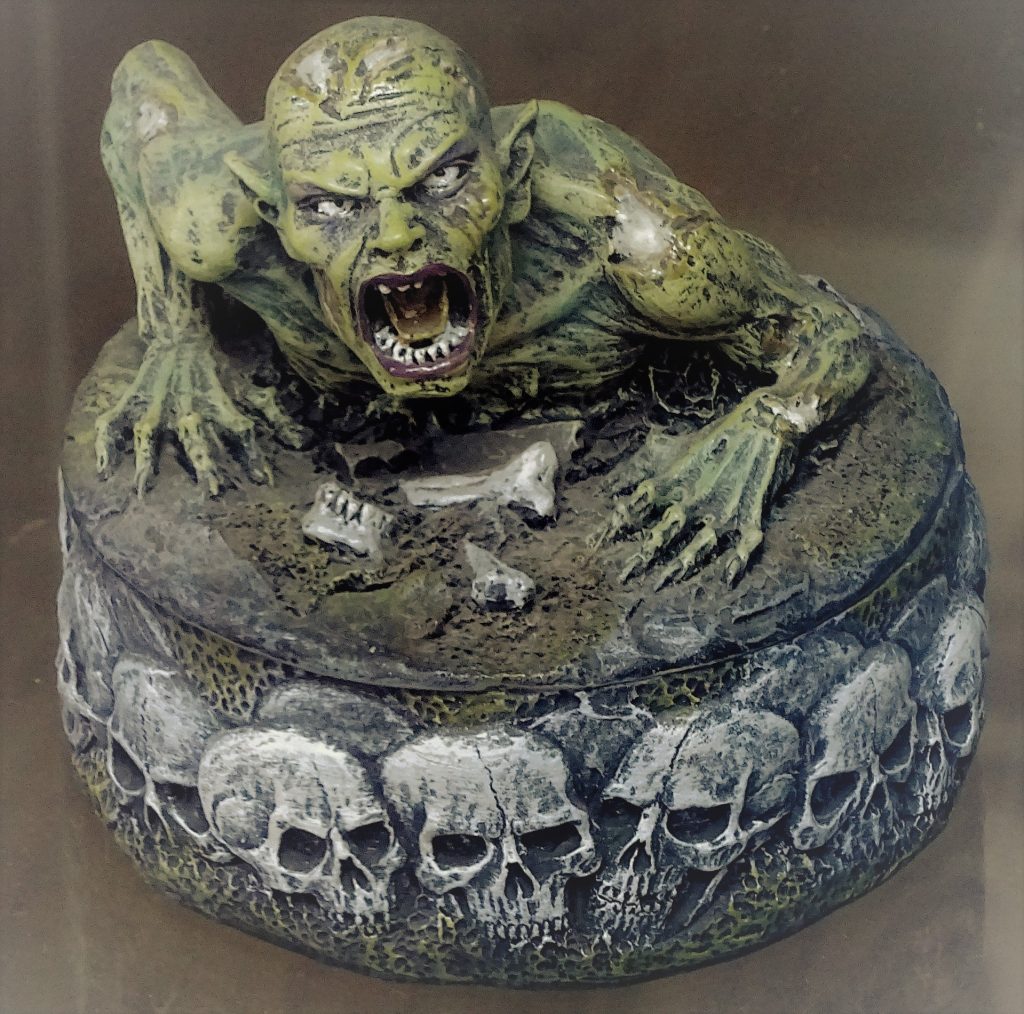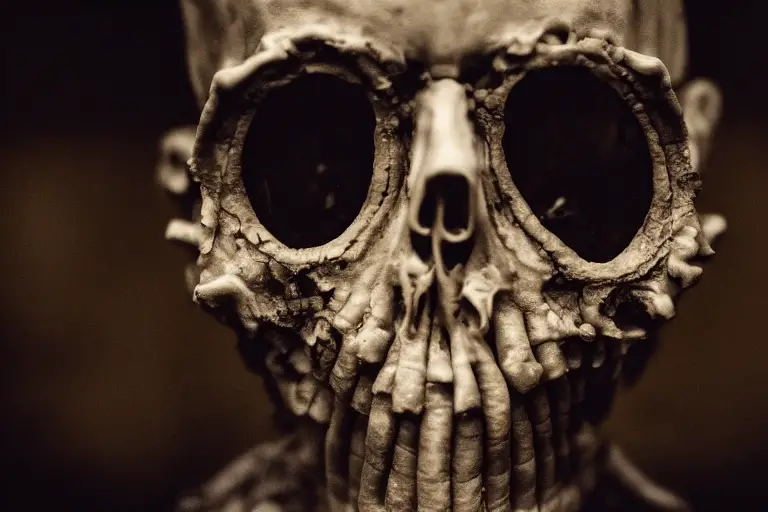Share the Lore!
By: Alex Postrado
All These Ghouls Tonight…
If you are a fan of anime, then you’ve probably already heard of the TV series called ‘Tokyo Ghoul’.
Its narrative follows a young man named Kaneki Ken, who 一 after barely surviving a fatal encounter with a ghoul 一 accidentally becomes one, himself.
A fruit of manga artist Sui Ishida’s passion project 一 Tokyo Ghoul helms the reintroduction of ghouls in recent pop culture.
But, what exactly is a Ghoul? And where did the myths of these grave-robbing, corpse-eating monsters all start?
Let’s dig deep!

What is a Ghoul?
In layman’s terms, a ghoul is an evil being that feeds on dead bodies.
First used in William Beckford’s Orientalist novel Vathek in the year 1786, the term ghoul has continued to broaden its meaning over time.
Some records say that they’re monsters. Some 一 demons. While others think that they’re malevolent spirits, simply looking for corpses to munch on.
Either way, they seem to be pretty interesting creatures in their own rights.
Giving life to some of the most gripping pieces of literature, art, and media, ghouls look as if they’re ready to take on every definition the world has assigned them.
But, no matter how many interpretations this creature gets, it still most definitely has an origin of a sort.
A single speck that started it all for these corpse-devouring monsters.

The Origin and Lore of Ghouls
It all started with a tale told by traders from the early Mesopotamian civilization.
It was about “a demonic being believed to inhabit burial grounds and other deserted places.”
They called it the Gallu.
According to the legend, it was an Akkadian demon of the ancient Mesopotamian Underworld.
But, how did the Gallu turn into the modern ghoul that we know of today?
Well, we have Arabian nomads to thank for that!
While historians generally trace back the origin of these grave-digging entities to the people of Mesopotamia, records show that if not for their constant contact with Arab Bedouins, the lore of the Gallu demons wouldn’t have circulated.
And the ghoul that we now know probably wouldn’t be the same.
So, how did the early Arabians pass on the story of the Gallu?
Simple. By word of mouth.
After all, it’s one of the easiest ways to deliver information.
But, as we all know, this form of communication 一 especially if done again and again 一 has the potential of leaving some details out of its original context.
And there you have the birth of the modern ghoul 一 or Ghūl, as the Arabic folklore calls it.
The Ghūl belonged to a diabolic class of jinn, or spirits, that was said to be the offspring of Iblīs, the Islamic counterpart of Satan.
According to the legend, Ghūls “were capable of constantly changing form, but their presence was always recognizable by their unalterable sign 一 ass’s hooves.“
Another interesting fact about early accounts of the modern ghoul is that they’re not known to be corpse-eaters.
Legends say that they prefer digging in on some fresh meat.

That’s why early settlers used to get the creeps whenever they heard about the Ghūls.
Because they believed that those evil entities weren’t after the bodies in the graveyards.
The Ghūls were there for the live ones.
The Creatures and their Evolution in Western Culture
The fascination with monsters and supernatural entities has been present in most 一 if not all 一 cultures since time immemorial.
It has always been a subject of our fears, our curiosity, and basically, our lives.
So, when Antoine Galland translated the One Thousand and One Nights 一 also known as the Arabian Nights, a collection of tales from the Islamic Golden Age 一 into French in the 18th century, people were thrilled.
Little did they know that some details were either lost in translation or altered.
One of which was that of the Arabic Ghūl.
It was rewritten in a way that would make the creature more terrifying.
And the idea that ghouls dig up graves and eat cadavers started with this translation.
From the Mesopotamian Gallu, the Arabian Ghūl, and the modern ghoul 一 this was indeed a monumental retelling of the chilling lore.
And the rest is history.
But, if the ghouls generally pique the interest of many, ages ago, is there even a pinch of truth to its story?

Do Ghouls Exist?
While in the case of zombies 一 creatures that ghouls are frequently confused with 一 some may argue that they could exist either through viruses or parasites, the existence of ghouls 一 at this time 一 remains highly improbable.
For one, unlike zombies, ghouls have little to no scientific basis.
Most studies and articles about ghouls out there focus more on their cultural impact rather than proof that they actually exist.
To be fair, though, there’s no denying that even the mere possibility of ghouls drawing breath in the real world could be equal parts scary and fascinating.
However, unless substantial evidence comes to light, it’s mostly safe to assume that even if you live close to your local cemetery, no ghoul should be able to drop by.

How Are Ghouls and Zombies Different?
As said earlier, people usually confuse ghouls and zombies.
And to put an end to all that, here’s what you need to know!
Ghouls aren’t humans, nor did they use to be.
At least what most of us believe is that they’re either spirits or creatures brought to life by black magic.
Zombies, on the other hand, are known to be reanimated dead human bodies “created by voodoo or through the bite of another zombie.”
So, while the walking dead would have no thoughts whatsoever and are mainly driven by their need to feed on living human flesh, ghouls 一 considering their general definition 一 would have the wits to make decisions of their own.
Nevertheless, it’s obvious that both ghouls and zombies put their own spin on the body-eating trope in supernatural stories.
Stories that have lived on through generations.
As for ghouls, there’s no doubt that they will continue to endure more ages to come.
The lore that’s integrally cemented in the Arab culture, even older than the religion of Islam, itself, the tale of ghouls is 一 and will always be 一 one of the greatest gifts of ancient history.
References:
https://fictionhorizon.com/what-is-tokyo-ghoul-about-everything-you-need-to-know/ https://www.britannica.com/topic/Iblis https://www.britannica.com/topic/ghoul https://www.ocf.berkeley.edu/~culturalanalysis/volume8/pdf/ghouls.pdf https://www.tandfonline.com/doi/abs/10.1080/00155870903219730 https://www.express.co.uk/news/science/721328/Zombie-outbreak-evolution-parasite http://www.differencebetween.net/science/nature/difference-between-ghoul-and-zombie/


I need to watch tokyo ghoul then.